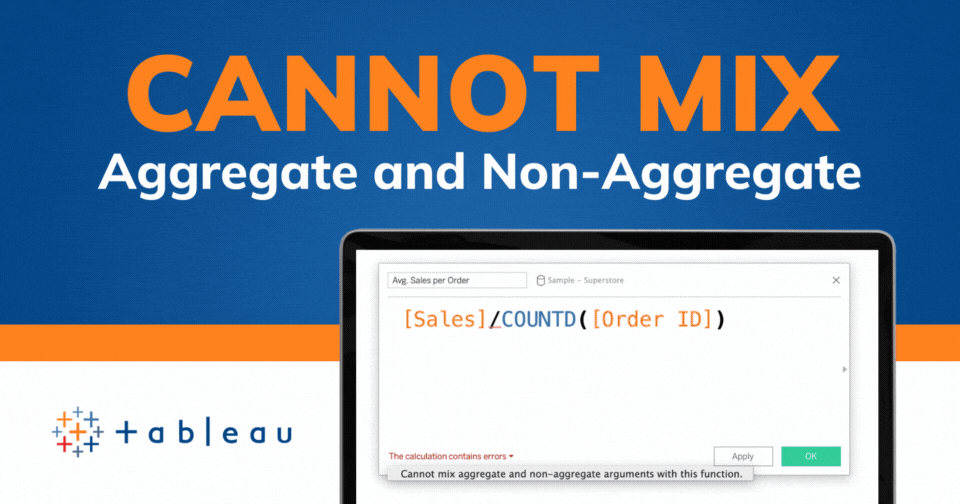Tableau Conference 2025 | Know Before You Go
If you’re a data enthusiast, analytics professional, or just someone curious about Tableau’s latest innovations, the Tableau Conference 2025 is your...
.gif)
By now, almost every business leader recognizes the vital importance of becoming more data-driven. Despite this, experts estimate that over 80% of data analytics projects fail to meet their goals. The reasons vary, with the blame often falling on problems like outdated technology, a lack of unified business processes, inaccessibility to critical data, or poor data quality.
The path to success (or to failure, for that matter) can be costly too. That’s why making the right decisions from the outset is essential. The first and most important decision is whether to build your own data team or invest in a third-party solution.
In this guide, we’ll explore these two main options in depth to help you make the right choice for your business:
%20(1).gif?width=293&height=154&name=Blog%20Header%20Images%20(1200%20%C3%97%20630%20px)%20(1).gif)
For many business owners, the first instinct is normally to build. However, if you’re running a small business, chances are you simply don’t have the headcount (or time) required to build an embedded, sustainable analytics solution from the ground up. The initial costs of building a new platform from scratch are also very high, but they don’t stop there.
Any internal platform also needs regular maintenance and updates, and that also means building a fully staffed team of professional data scientists, analysts, and data engineers. According to Fivetran, a leading data analytics platform vendor, a healthy data team typically costs about $520,000 per year for a team of professionals to build and maintain data pipelines.
Designing and building a platform that’s capable of handling tens or even hundreds of millions of API calls and data loading requests also requires a robust and scalable architecture, and that takes time and money to implement. It can easily cost half a million dollars and take more than half a year to build the infrastructure necessary to run a mid-sized internal analytics platform.
On top of that comes the significant capital expenses associated with building integrations, applying security and compliance controls, and hiring new staff. For example, a full-time data engineer now commands an average salary of $111,500. You’ll also need a full team of data analysts of varying levels of skill and experience, for which salaries start at over $70,000.
Such a major investment typically takes years to pay off, especially when you factor in the ongoing costs, such as those associated with people salaries and system maintenance. With the costs being so high, the risk is enormous too, especially given the rapid cycle of innovation in the world of technology.
The risks involved aren’t only directly financial either. There’s also the inherent lack of support that comes with building a scalable environment, which can pose serious challenges in the future, should your business expand significantly. For example, you’ll probably have no problem finding people with expertise in popular business intelligence and data analytics solutions like Tableau or Snowflake. However, when you’re using your own internal platform, you’ll have to provide extensive training to any new hire to get them up to speed using a platform that may not be familiar with all the technologies used to make it work.
Given the cost and complexity associated with building your own data team and platform, there is rarely a viable reason to go down this route. The advantages of total ownership and control are certainly a factor, but they are usually greatly overshadowed by the drawbacks on ongoing support that exist outside the core business model. For the most part, global enterprises are the only organizations that have the internal people processes and financial resources to hire and sustain an internal data team.

Many businesses, including those that build their own data pipelines and analytics platforms, consult external advisors to spread their workloads and reduce their operational risk. Working with an external consultant can expedite the speed of implementation and help ensure that you have a proven architecture before making any major investments.
The great thing about partnering with external consultants is that you can bring them on board quickly. This makes it an ideal solution when you’re tackling more projects than your internal team can handle, yet the situation doesn’t warrant onboarding a new full-time member of staff. Working with consultants is also an obvious choice when you need to tap into niche expertise that you don’t currently have in-house – something that’s very common in complex areas like data management and analytics.
The main limitation of consultancy firms is that they’re just that – consultants. Consultants aren’t typically going to assume other key responsibilities, such as implementing software platforms and managing licenses. They might help you choose the right data solutions from prior implementation experience, but their abilities to drive a sustained data culture and provide ongoing training and support will be much more limited. As such, working with external advisors can only augment your internal capabilities – it isn’t going to replace them in most cases.
While consultants can play an important role in guiding one-time projects and filling expertise and availability gaps, businesses need a long-term solution when it comes to data analytics. After all, becoming data-driven isn’t really a destination, but a journey of continuous refinement and improvement to drive smart, informed decisions consistently. This is where managed data analytics services come into play.
Like any managed service, a managed data analytics service provides on-demand expertise and resources for a known monthly rate. This translates into greatly reduced financial risk since your managed services partner has clearly defined expectations for what they need to deliver/maintain to keep your business. By contrast, when you’ve invested millions in building an in-house data team and platform, the last thing you want is to find your business outgrowing it and having to start over.
Managed analytics revolves around automation and self-service, backed up by robust and responsive customer support. As far as the platform is concerned, it should allow you to connect almost any data source, thus overcoming the problem of data silos. This also reduces the need to hire systems integrators, who cost a further $108,000 per year. A managed data operations service will also include all the required underlying infrastructure, such as data warehouses and ETL integrations, to eliminate the need for maintenance, upgrades, and vendor contracts that would otherwise be an internal team's responsibility. Instead, the managed service vendor will be responsible for these operations.
A fully managed, end-to-end analytics service should encompass the best of both worlds. To a considerable extent, a quality service will deliver a tailored approach aligned to the unique needs of your business. To that end, they’ll provide both the expertise and the platform, while also taking care of the implementation, ongoing maintenance, and software licensing.
Regardless of whether you decide to build or buy an analytics platform, the main goal remains the same – to leverage timely and relevant insights from high-quality data. That’s much harder to achieve if you’re going it alone. By working with the right partners, however, you can share the responsibility to turn data into actionable insights that sustain business growth and drive long-term success.
We combine our end-to-end Analytics Accelerator platform with domain-specific expertise to help you realize the full potential of your data. Get in touch today to start your new data journey.
-2.gif)
If you’re a data enthusiast, analytics professional, or just someone curious about Tableau’s latest innovations, the Tableau Conference 2025 is your...

Tableau Plus is the new premium offering from Tableau, a leading data visualization and business intelligence platform. It builds upon the...

If you've spent any time working with Tableau, you've likely encountered the dreaded "Cannot Mix Aggregate and Non-Aggregate Arguments" error. It's a...